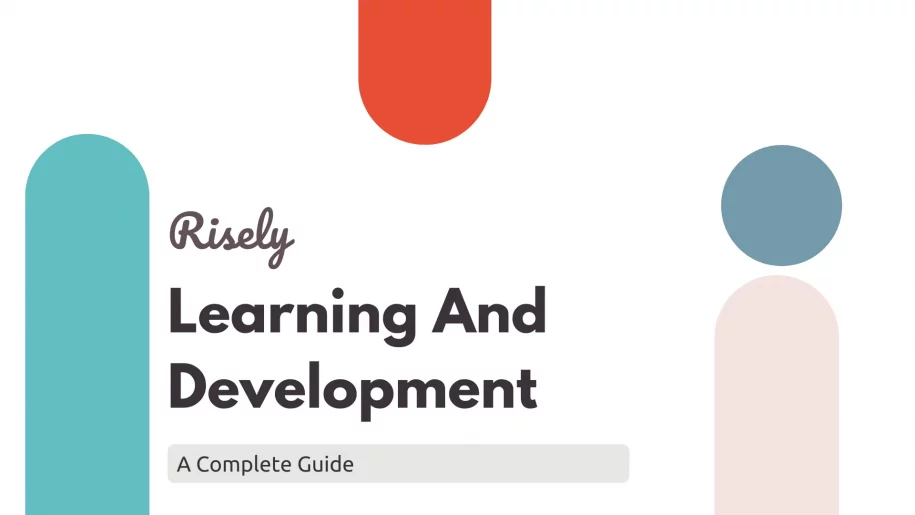What Does A Learning And Development Team (L&D) Do?
The role of Learning and Development teams is critical in fostering growth within organizations. Understanding the essence of L&D in today’s workplace is key to driving talent management and achieving business goals. By understanding the core functions and processes of L&D, you can address skills gaps efficiently. Tune in to explore the anatomy of an effective L&D team, essential processes, key performance indicators, emerging trends, and challenges faced in learning and development.What is the role of your L&D Team?
Learning and Development teams drive organizational success through talent development and training initiatives. They focus on bridging skills gaps, enhancing employee engagement, and aligning learning solutions with business goals. L&D professionals utilize learning management systems, instructional design, and performance analytics to tailor training programs that cater to employee needs. By taking a strategic approach to learning and development, these teams contribute significantly to enhancing organizational performance and fostering a culture of continuous learning.Key Objectives of L&D Teams Across Industries
- Identify and bridge skills gaps
- Enhance employee training programs
- Align development initiatives with business goals
- Focus on talent development
- Foster a culture to enable learning
- Improve organizational performance through strategic learning solutions
- Enhance the overall employee experience
- Drive professional growth within organizations
What are Critical Skills for Success in the L&D Function?
To excel in learning and development, professionals need a diverse skill set that includes:- Strong Communication Skills: The ability to clearly convey information, ideas, and instructions to various stakeholders, ensuring understanding and engagement, is essential for your success as an L&D professional.
- Project Management Abilities: Second, you need skills in planning, executing, and closing projects efficiently, including managing resources, timelines, and budgets to achieve specific goals. All of this becomes important while managing multiple development initiatives. For instance, analytical skills are listed by more than half of L&D professionals as per LinkedIn!
- Deep Understanding of Instructional Design Principles: Training is best when it meets the needs of your team; that’s why you need knowledge of how to create effective and engaging educational experiences based on learning theories and best practices.
- Talent Management Proficiency: The capability to attract, develop, and retain skilled employees, aligning their development with organizational goals, is also a vital component of the L&D function.
- Change Management Proficiency: Skills in guiding and managing organizational change, helping employees adapt to new methods, technologies, or shifts in strategy help you overcome resistance and ensure smooth transitions.
- Insights into Emerging Trends in L&D: Staying informed about the latest developments and innovations in the learning and development field to keep programs relevant and effective is critical. Knowledge of new tools and technologies to enhance learning experiences, such as e-learning platforms, virtual reality, and artificial intelligence.
The Anatomy of an Effective L&D Team
Typical roles in L&D teams include:- Development Managers overseeing training programs
- Instructional Designers crafting learning solutions
- Development Specialists are focusing on skills gaps
- Training Facilitators and Coordinators execute these programs
Other Interesting Reads
Essential Learning and Development Processes
Let’s understand the primary learning and development processes that would make up your work primarily:From Needs Analysis to Evaluation: The L&D Workflow
Navigating from needs analysis to evaluation involves a structured approach in the L&D workflow. You need to design tailored training programs by beginning with thorough needs assessment utilizing tools like skills gap analysis. Implementing these programs and measuring their effectiveness through KPIs and feedback loops ensures continuous improvement. The evaluation further refines future strategies for enhanced learning outcomes and aligning L&D initiatives with evolving business needs. This iterative process forms the backbone of an effective learning and development framework. Read more: Think Of These 4 Trends In Your Corporate Learning StrategyLeveraging Technology in L&D Processes
Incorporating innovative technologies like learning management systems and online courses optimizes training delivery in L&D processes. These tools enable you to track employee progress, customization of learning paths, and immediate feedback mechanisms. Using technology, you can provide on-demand learning solutions, ensuring continuous skill development aligned with organizational goals. Additionally, digital platforms facilitate the analysis of key performance indicators to measure the effectiveness of training initiatives, enabling data-driven decision-making for enhanced employee development strategies.Key Performance Indicators (KPIs) for L&D Teams
Key performance indicators (KPIs) are measurable goals that organizations use to evaluate the success of their learning and development (L&D) initiatives. LinkedIn Workplace Learning Research has repeatedly highlighted the need for selecting the right metrics, and avoiding the pitfall of “vanity” metrics. The KPIs of your team can vary depending on the specific goals and objectives of the organization, but some common metrics for L&D teams include:- Business Results: L&D programs should align with the organization’s overall business goals and contribute to improved performance, productivity, and profitability.
- Employee Development: KPIs such as employee satisfaction, engagement, and retention help you measure the impact of L&D programs on individual growth and development.
- Training Effectiveness: Training KPIs like program completion rates, knowledge retention, and skills improvement can assess the effectiveness of L&D initiatives in enhancing capabilities of employees on your team.
- ROI: Measuring the return on investment for L&D investments is crucial to determine if the resources allocated to training and development are generating tangible benefits for the organization.
- Continuous Learning: Tracking the participation and engagement levels in ongoing learning activities can indicate the success of L&D programs in fostering a culture of continuous learning within the organization.
How Can You Align L&D Outcomes with Business Goals?
Aligning learning and development (L&D) outcomes with business goals is crucial for organizations to achieve optimal performance and success. You strategically ensure that training and development initiatives directly contribute to the organization’s overall objectives. To align L&D outcomes with business goals, you must clearly understand their strategic priorities and identify the skills and knowledge required to achieve them. L&D teams can then design and implement training programs that target those specific areas of development. Furthermore, aligning L&D outcomes with business goals helps you create a culture of continuous learning within the organization. Employees understand the relevance and importance of their development to the organization’s overall success, leading to increased collaboration, innovation, and overall organizational performance. Developing coaching skills in the team managers and leaders is essential in this process, since they are influencers when it comes to absorption of L&D programs by employees. Thus, this complex process calls for L&D teams to match business needs, design effective programs and balance the expectations of multiple stakeholders.What are Some Emerging Trends in Learning and Development?
Learning and development (L&D) is continuously evolving to meet the changing needs of organizations and employees. Several emerging trends are shaping the future of L&D:- Digital Learning Platforms: The rise of digital learning platforms has transformed how organizations deliver training and development programs. These platforms provide online access to various learning resources, including e-learning modules, videos, and interactive courses that could be a hit among your employees. These changes have brought focus on design of effective digital learning experiences for employees.
- E-Learning: E-learning, or electronic learning, refers to delivering educational content through digital devices such as computers, tablets, and smartphones. E-learning offers flexibility, accessibility, and self-paced learning opportunities for employees.
- Soft Skills Training: While technical skills are essential, organizations recognize the value of soft skills such as communication, collaboration, and leadership. L&D programs increasingly incorporate soft skills training to help employees develop the interpersonal skills needed to succeed in today’s workplace.
- Top 7 Learning And Development Podcasts You Must See
- 7 Top Learning And Development Newsletters For 2025
- 8 Learning and Development Conferences You Need to Attend, 2024-25
What are the Challenges Facing L&D Teams Today?
Like any other organizational function, learning and development (L&D) teams face challenges in empowering employee growth and development. Some common challenges for L&D today include:- Change Management: L&D initiatives often require employees to embrace change, which can be met with resistance. To ensure successful implementation, L&D teams must effectively manage the change process and address any resistance.
- Resistance to Change: Employees may resist participating in L&D programs for various reasons, such as fear of the unknown, lack of perceived value, or time constraints. You must overcome this resistance and communicate the benefits of development initiatives.
- Return on Investment (ROI): Learning analytics are the Achilles heel for many teams – they are needed to prove success; but there’s a lot of confusion around what really matters and how of use them effectively. Demonstrating the ROI for L&D initiatives can be challenging. You need to measure the impact of training programs on business outcomes and articulate the value they bring to the organization.
Conclusion
In summary, a Learning and Development (L&D) team plays a pivotal role in shaping employee growth and organizational success. By identifying skills gaps, designing effective training programs, and leveraging technology, L&D teams drive learning initiatives that align with business objectives. The evolving landscape of digital learning platforms and soft skills training underscores the importance of staying abreast of emerging trends. Establishing a practical L&D function benefits large corporations and holds value for small businesses looking to foster continuous learning and development.Learning and Development Strategy Framework Free Template
Grab your free copy of Risely’s resources for L&D managers today!
Other Related Blogs
How to build a Learning and Development Action Plan ft Katie Greenwood
How to build a Learning and Development Action Plan ft Katie Greenwood Does your company’s Learning and Development (L&D) strategy feel like more “guessing” than “winning”? You’re not the only…
How to create training objectives for business success?
How to create training objectives for business success? Why are we conducting training? That’s where the story starts for all our training and development initiatives, which take the form of…
Learning at Work in the Age of AI
How is Learning at Work Shaping in the Age of AI? The traditional way of learning at work is changing fast because of AI. This change allows companies to improve…
Top 7 Learning and Development Trends 2025
Top 7 Learning and Development Trends 2025 It is no surprise that the world of learning and development is changing. A lot of innovation is happening in the space, particularly…


